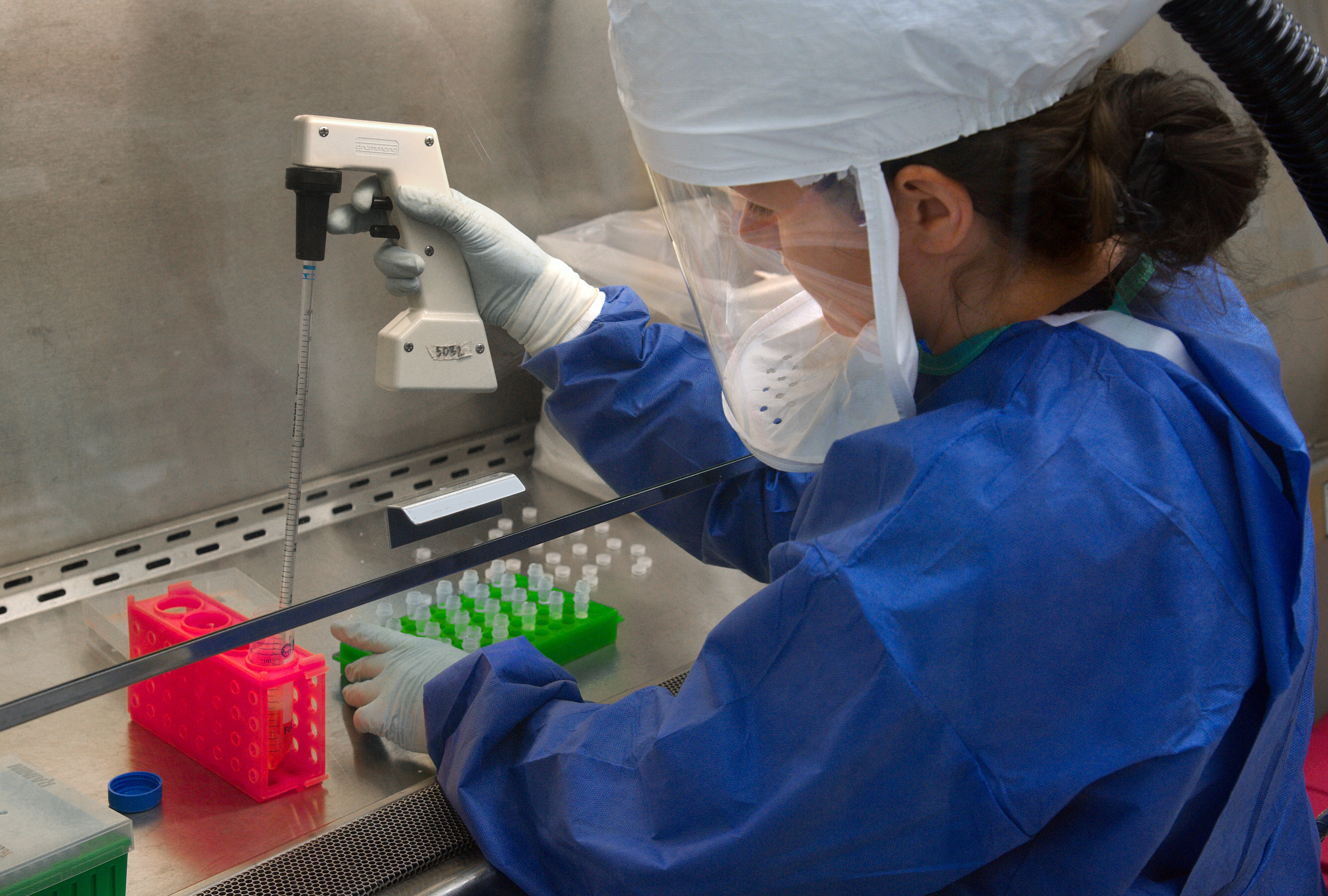Difference between revisions of "Main Page/Featured article of the week/2014"
Shawndouglas (talk | contribs) (Created as needed.) |
Shawndouglas (talk | contribs) (Added last article.) |
||
| Line 13: | Line 13: | ||
<!-- Below this line begin pasting previous news --> | <!-- Below this line begin pasting previous news --> | ||
|<h2 style="font-size:105%; font-weight:bold; text-align:left; color:#000; padding:0.2em 0.4em; width:50%;">Featured article of the week: May 5–11, 2014:</h2> | |<h2 style="font-size:105%; font-weight:bold; text-align:left; color:#000; padding:0.2em 0.4em; width:50%;">Featured article of the week: May 5–11, 2014:</h2> | ||
<div style="padding:0.4em 1em 0.3em 1em;" | <div style="padding:0.4em 1em 0.3em 1em;"> | ||
<div style="float: left; margin: 0.5em 0.9em 0.4em 0em;">[[File:CDC scientist transfers H7N9.png|280px]]</div> | <div style="float: left; margin: 0.5em 0.9em 0.4em 0em;">[[File:CDC scientist transfers H7N9.png|280px]]</div> | ||
A '''[[public health laboratory]]''' is a [[laboratory]] that serves regional, national, or in some cases global communities by providing clinical diagnostic testing, environmental testing, disease diagnosis and evaluation, emergency response support, applied research, regulation and standards recommendations, laboratory training, and other essential services to the communities they serve. | A '''[[public health laboratory]]''' is a [[laboratory]] that serves regional, national, or in some cases global communities by providing clinical diagnostic testing, environmental testing, disease diagnosis and evaluation, emergency response support, applied research, regulation and standards recommendations, laboratory training, and other essential services to the communities they serve. | ||
| Line 20: | Line 20: | ||
On a global level, the public health laboratory is influenced and supported by the the World Health Organization (WHO) and the Association of Public Health Laboratories (APHL). In the U.S. they are influenced, overseen, and/or regulated by several federal agencies. ('''[[Public health laboratory|Full article...]]''') | On a global level, the public health laboratory is influenced and supported by the the World Health Organization (WHO) and the Association of Public Health Laboratories (APHL). In the U.S. they are influenced, overseen, and/or regulated by several federal agencies. ('''[[Public health laboratory|Full article...]]''') | ||
</div> | |||
|- | |||
|<br /><h2 style="font-size:105%; font-weight:bold; text-align:left; color:#000; padding:0.2em 0.4em; width:50%;">Featured article of the week: May 12–18, 2014:</h2> | |||
<div style="padding:0.4em 1em 0.3em 1em;"> | |||
<div style="float: left; margin: 0.5em 0.9em 0.4em 0em;">[[File:20120217 structure of the Austrian electronic health records (ELGA).jpg|280px]]</div> | |||
An '''[[electronic health record]] (EHR)''' is an evolving concept, "defined as a longitudinal collection of electronic health information about individual patients and populations." It is a record in digital format that is theoretically capable of being shared across different health care settings. In some cases this sharing can occur by way of network-connected enterprise-wide information systems and other information networks or exchanges. EHRs may include a range of data, including demographics, medical history, medication and allergies, immunization status, [[laboratory]] test results, radiology images, vital signs, personal stats like age and weight, and billing information. | |||
The differences between an EHR and an [[electronic medical record]] (EMR) differ from entity to entity and from country to country. For example, the [[United States Department of Health and Human Services|U.S. Department of Health and Human Services]] (HHS) notes that despite the interchanging of the terms "EMR" and "EHR," it considers them two separate entities: the EMR came first, used primarily by medical clinicians for diagnosis and treatment, while the EHR came into existence as a more holistic, inclusive collection of a patient's health data. ('''[[Electronic health record|Full article...]]''') | |||
</div> | </div> | ||
|- | |- | ||
Revision as of 16:37, 19 May 2014
Featured article of the week archive - 2014
Welcome to the LIMSwiki 2014 archive for the Featured Article of the Week.
|











